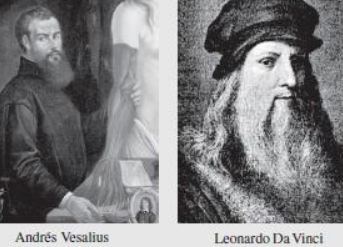Art, science and medicine in the Renaissance, Leonardo Da Vinci and Andrés Vesalio
Keywords:
HUMANISM, SCIENCE, ART, MEDICINE.Abstract
Introduction: Leonardo Da Vinci and Andrés Vesalio stand out for being representatives of the new thinking promoted by Renaissance, a stage that marked the guiding principles for the development of culture and science in general and attached to a set of guidelines of Humanism.
Objective: to present a synthesis of transcendental aspects of the work of two outstanding Renaissance humanistic thinkers: Leonardo Da Vinci (1452 - 1519) and Andrés Vesalio (1515 - 1564)
Method: materials from different bibliographical sources were collected, the Encyclopedia of the History of Medicine, the Anthology of History of Philosophy, as well as other articles of Sociology, Economics, History, Art and Medicine available in specialized magazines and on Internet, which were processed using empirical level methods such as observation and description and the theoretical level as analysis - synthesis and historical - logical.
Results: an article that explored into the humanist legacy of the Renaissance, through the correspondences between art, science and medicine in the work of two renowned representatives of advanced knowledge in the European transition from the Middle Ages to the present-days.
Conclusions: through the synthesis of transcendental aspects of the work of Leonardo Da Vinci and Andrés Vesalio, we came to the rescue of their legacy to incorporate it as part of the general culture and medical culture of professionals in the health sector, from their respective professional positions undertaking into the anatomy and painting as essential components of scientific medicine that began to see the light mentioned during centuries.
Downloads
References
1. Del Renacimiento a la Modernidad. En Historia de la Filosofía. Antología. Tomo III. La Habana: Editorial Félix Varela; 2011.
2.Roa García R. El alba de la modernidad. En Historia de las doctrinas sociales. La Habana: Ediciones Memoria: 2001.
3.Engels F. Dialéctica de la Naturaleza. Introducción. La Habana: Editora Política; 1979.
4.Bernal Jonh D. Arte, naturaleza y medicina. En Historia social de la ciencia. La Habana; Editorial de Ciencias Sociales: 1981.
5.Arenas N, Bozo E. Impacto renacentista en las artes, en la anatomía, en la medicina y en enfermería. Salus [En línea]. 2009 [consulta: 2018 julio 13]; 13(1): 50-6. Disponible en: http://www.redalyc.org/pdf/3759/375938989010.pdf
6.Díaz Sosa F. La relación histórica filosofía - medicina dese la antigüedad griega hasta el siglo XVIII. El Renacimiento. En Selección de artículos de filosofía, salud y sociedad. La Habana: Editorial Ciencias Médicas; 2011.
7.Pérez Pérez OF. El renacimiento. Desarrollo de la Anatomía. Los artistas plásticos. En De los albores a los albores. Un recorrido por la historia de la medicina. La Habana: Editorial Ciencias Médicas; 2011.
8.García Guerrero M. Medicina y arte. La revolución de la anatomía en el Renacimiento. Rev Cient Soc Esp Enferm Neurol [En línea]. 2012 Jun [consulta: 2018 julio 13]; 35(0): 25-7 Disponible en: http://www.elsevier.es/es-revista-revista-cientifica-sociedad-espanola-enfermeria-319-articulo-medicina-arte-la-revolucion-anatomia-X201352461242765X
9.Topolanski Ricardo. La Lección de Anatomía - Medicina y Arte. TARINGA[En línea]. 2009 Disponible en: http://www.taringa.net/posts/imagenes/2394756/La-Leccion-de-Anatomia---Medicina-y-Arte.html
10.Leonardo da Vinci, el genio del Renacimiento. AstroMía. Disponible en:http://www.astromia.com/biografias/davinci.htm
11.Fernández G. LEONARDO DA VINCI: obras y mitos [En línea]. [consulta: 2018 julio 13]. Disponible en: http://www.theartwolf.com/leonardo_es.htm
12.Colmenares Arreaza G. Leonardo Da Vinci. Sus aportes a la medicina (1452-1519). Colección Razetti [En línea]. 2013 [consulta: 2018 julio 13]; Vol XIV(13): 517-530. Disponible en: https://blogs.uprm.edu/huma3112/files/2013/12/DaVinci-y-la-Medicina.pdf
13.Vesalio: Figura del Renacimiento y padre de la anatomía moderna. GALENUS [En línea]. 2003 [consulta: 2018 julio 13]; 15(1). Disponible en http://www.galenusrevista.com/?Vesalio-Figura-del-Renacimiento-y
14.Vesalio A. TRES INNOVADORES: VESALIO, PARACELSO Y GILBERT- Ciencias Renacentista [En línea]. 2011 Nov [consulta: 2018 julio 13]. Disponible en: https://lacienciarenacentista.wordpress.com/category/personajes-del-renacimiento/andres-vesalio/
15.Romero RR. Andrés Vesalio(1514-1564). Fundador de la Anatomía Humana moderna. Int. J. Morphil. [En línea], 2007 [consulta: 2018 julio 13]; 25(4): 847-50. Disponible en: https://scielo.conicyt.cl/pdf/ijmorphol/v25n4/art26.pdf
16.Topolanski R. Obra el arte y la medicina. En: Cirugía. Capítulo 6 [En línea]. [consulta: 2018 julio 13]. Disponible en: http://www.smu.org.uy/publicaciones/libros/textocompleto/arte-y-medicina/arte-y-medicina6.pdf
17.Muñoz L.A. Aporte científico de Andrés Vesalio [En línea]. [consulta: 2018 julio 13]. Disponible en: https://es.scribd.com/doc/297371061/Aporte-Cientifico-de-Andres-Vesalio

Published
How to Cite
Issue
Section
License
Authors who have publications with this journal agree to the following terms: Authors will retain their copyrights and grant the journal the right of first publication of their work, which will be publication of their work, which will be simultaneously subject to the Creative Commons Attribution License (CC-BY-NC 4.0) that allows third parties to share the work as long as its author and first publication in this journal are indicated.
Authors may adopt other non-exclusive license agreements for distribution of the published version of the work (e.g.: deposit it in an institutional telematic archive or publish it in a volume). Likewise, and according to the recommendations of the Medical Sciences Editorial (ECIMED), authors must declare in each article their contribution according to the CRediT taxonomy (contributor roles). This taxonomy includes 14 roles, which can be used to represent the tasks typically performed by contributors in scientific academic production. It should be consulted in monograph) whenever initial publication in this journal is indicated. Authors are allowed and encouraged to disseminate their work through the Internet (e.g., in institutional telematic archives or on their web page) before and during the submission process, which may produce interesting exchanges and increase citations of the published work. (See The effect of open access). https://casrai.org/credit/


